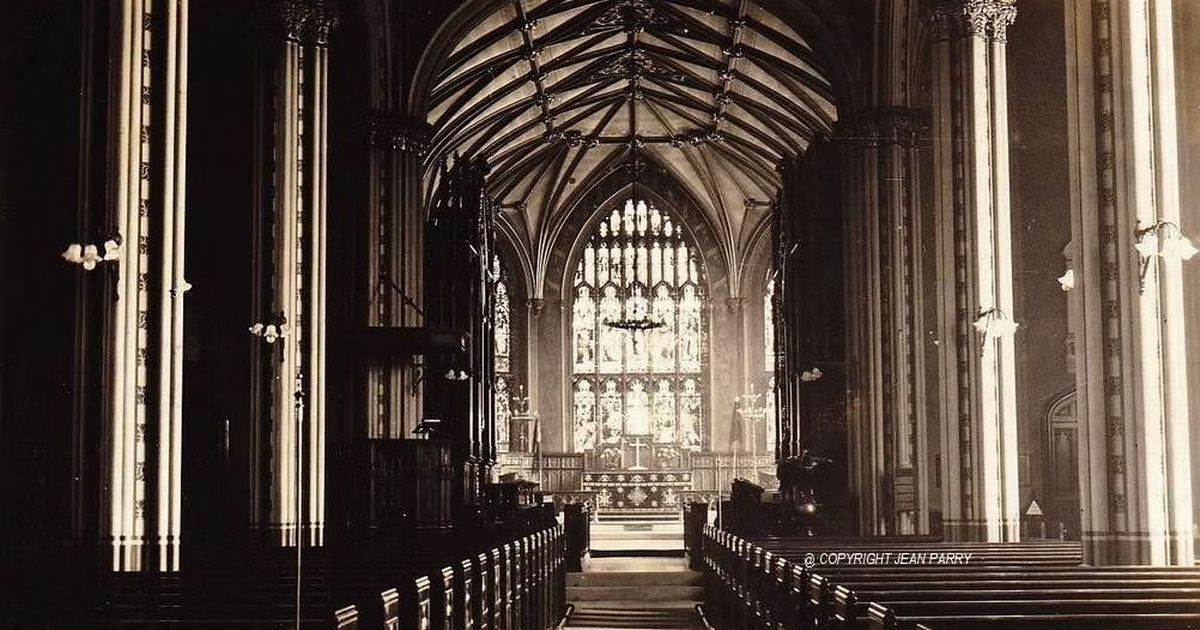This is how St Luke’s Church looked 94 years ago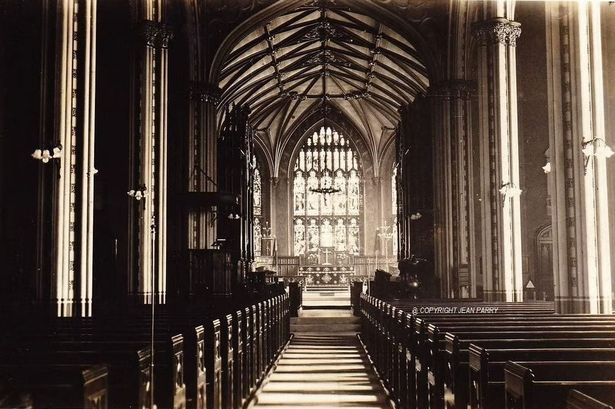 Inside St Luke’s Church in 1931(Image: Photo courtesy of Bryan J. McCahey/Jean Parry)
Inside St Luke’s Church in 1931(Image: Photo courtesy of Bryan J. McCahey/Jean Parry)
Rare photos taken almost a century ago offer a glimpse inside Liverpool’s Bombed Out Church before it was bombed. Located on the corner of Berry Street, Leece Street and Bold Place in the city centre, St Luke’s Church is one of Liverpool’s most famous spaces.
Constructed between 1811 and 1831, the Grade II* listed site welcomed generations of worshippers from across Liverpool for over the first half of its life. But during the May Blitz of 1941, the beautiful church, designed by architects John Foster Sr. and Jr., was almost completely destroyed
Hit by an incendiary bomb and burned for several days, only the church’s stone shell was left behind. Miraculously, no lives were lost in the attack, which took place in the early hours of May 6 that year.
READ MORE: Liverpool’s long lost festival that saw hundreds descend on parkREAD MORE: Liverpool Sainsbury’s supermarket prices in 1982 shows how much has changed
What remains of the historic site still exists in the city today and overtime has been affectionately know as “The Bombed-Out Church.” One of the most recognisable landmarks in the city centre, it stood derelict for many years before reopening in the early 2000s as a space for arts and community events.
Today, the church is a prime meeting spot in the city, hosting everything from weddings to outdoor cinemas, theatrical performances and it even has its own garden bar. For decades, regular worshippers at St Luke’s would have seen two aisles where the grassy floor covers the interior today.
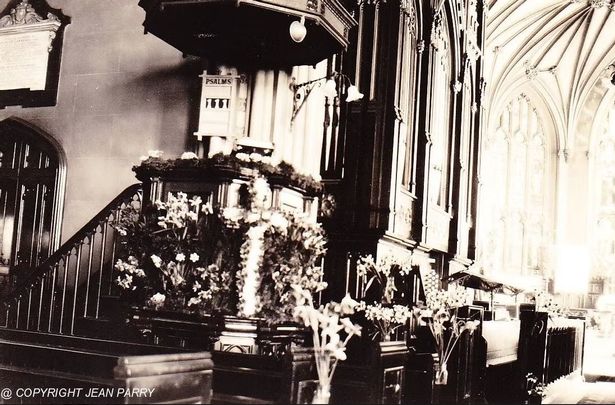 The organ inside St Luke’s Church, built by Flight and Robson(Image: Photo courtesy of Bryan J. McCahey/Jean Parry)
The organ inside St Luke’s Church, built by Flight and Robson(Image: Photo courtesy of Bryan J. McCahey/Jean Parry)
There was also stained glass in the windows where now only fragments survive, one of which is Liverpool’s hidden Liver Birds. The discovery was made by custodians of the famous landmark in 2011, while work was being carried out to clear an area known as the “forbidden zone”, which is closed to the public for safety reasons.
In recent years, architecture student David Oldham created stunning images of how St Luke’s ‘bombed out’ church would have looked before it was left a smouldering wreck by a World War II Luftwaffe raid. David fashioned the ‘before and after’ composite pictures as part of painstaking research for his University of Liverpool project.
READ MORE: Long lost Merseyside schools that Scouse celebrities went toREAD MORE: Brookside quiz: How well do you know the show’s longest-serving cast members?
Few generations remember St Luke’s before it was bombed, or have never seen photos of the site before the damage. But now, rare images, unseen by many offer a virtual tour into the building as it looked 94 years ago.
Campaigner and local historian Jonathan Wild, who runs the website bombedoutchurch.co.uk, has dedicated much of his research to the history of St Luke’s Church and shared a number of contemporary photographs with the ECHO, taken from the centenary of the church in 1931. The fascinating photographs are originally from the private collection of Mrs. Jean Parry, daughter of Revd. Powell-Miller, who was Vicar of St. Luke’s in the 1930s.
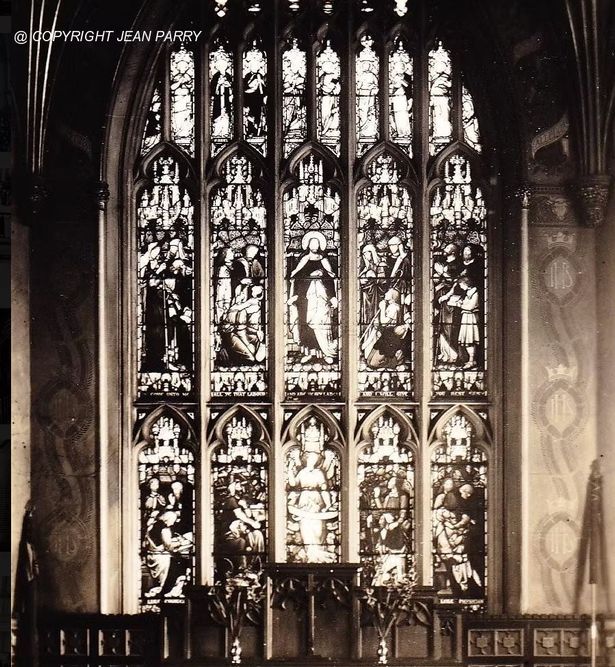 The stained glass windows back in 1931(Image: Photo courtesy of Bryan J. McCahey/Jean Parry)
The stained glass windows back in 1931(Image: Photo courtesy of Bryan J. McCahey/Jean Parry)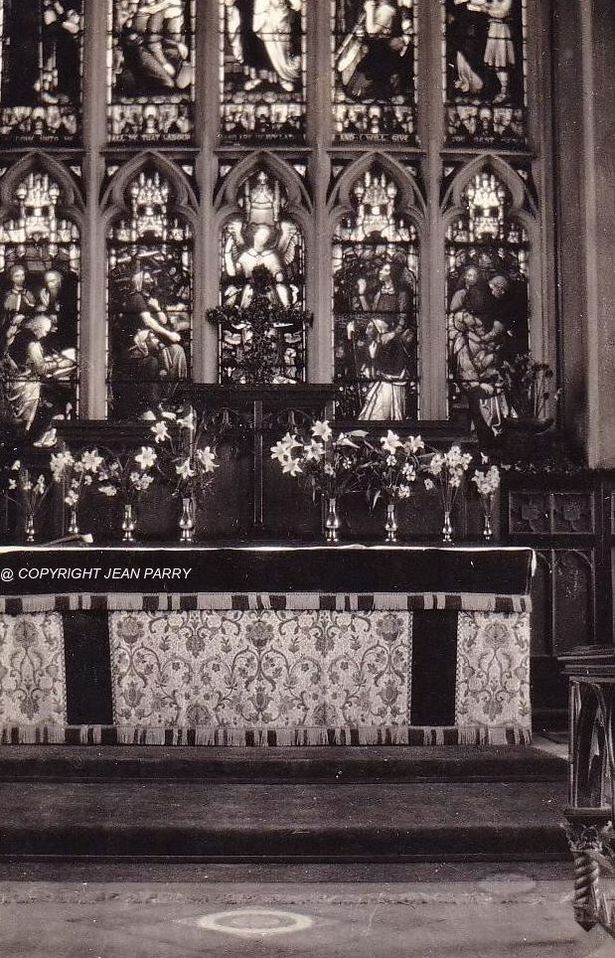 A closer look at what the altar looked like 94 years ago(Image: Photo courtesy of Bryan J. McCahey/Jean Parry)
A closer look at what the altar looked like 94 years ago(Image: Photo courtesy of Bryan J. McCahey/Jean Parry)
The unique images, many which have never been published before, were supplied by Bryan J. McCahey, who through his own research on St Luke’s Church was presented with copies of Ms Parry’s incredible photos back in the 1990s. Many in Liverpool will have never seen photographs like these which offer a fascinating window into our city’s past.
The images show various part of St Luke’s interior, particularly the main body of the church. Here, you can see one main aisle running down the centre of the church and two either side of the pews, as well as the white pillars which have patterns.
READ MORE: 60 most popular baby names for girls and boys back in 1995READ MORE: Lost nightclub with ’50p drinks’ was an escape ‘from humdrum of nine to five life’
The white pillars throughout have patterns and the altar sits beneath an ornate and intricate roof. There is also an organ on the left and the choir stalls either side.
According to Mr Wild, the large organ was built by Flight and Robson, of London and was situated in the left-hand body of the church, behind the choir stalls either side. Little is known about this organ apart from its builder.
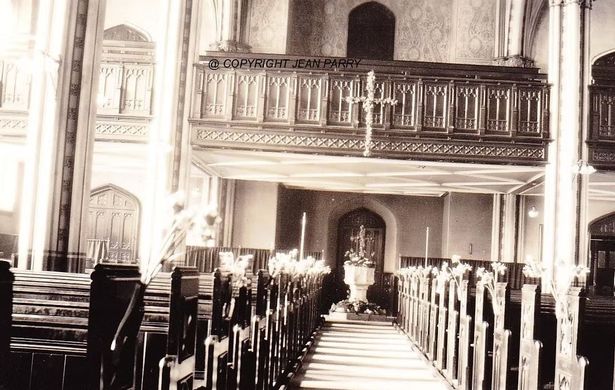 The “lost gallery” at the rear of the church(Image: Photo courtesy of Bryan J. McCahey/Jean Parry)
The “lost gallery” at the rear of the church(Image: Photo courtesy of Bryan J. McCahey/Jean Parry)
One photograph also shows the “lost gallery” which was located at the rear of the church. This is said to have been completely destroyed in the fire.
Next time you visit St Luke’s Church, you’ll likely be able to spot or envisage different features of the building from the past, as seen in these photographs. To find out more about the history of St Luke’s Church, click here.
